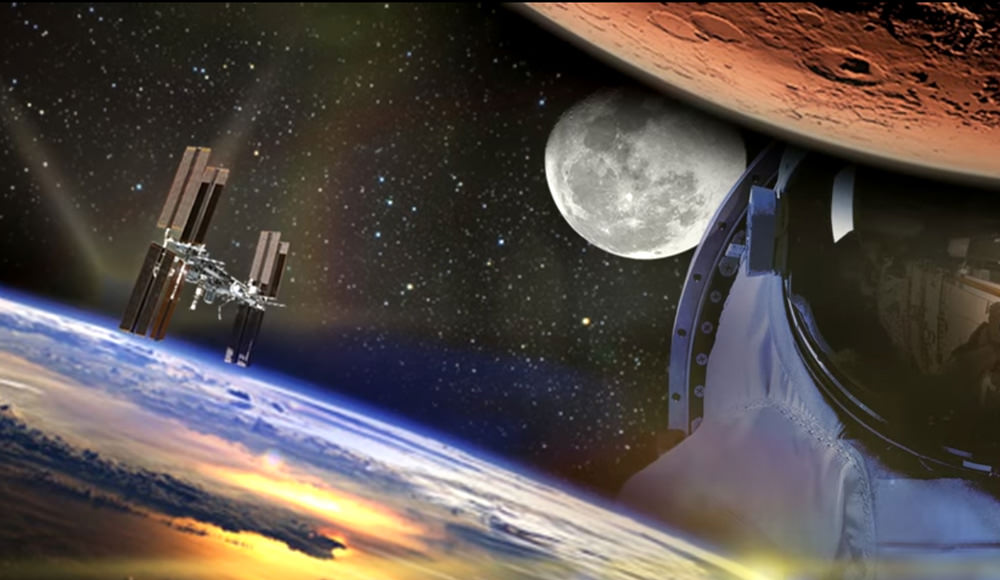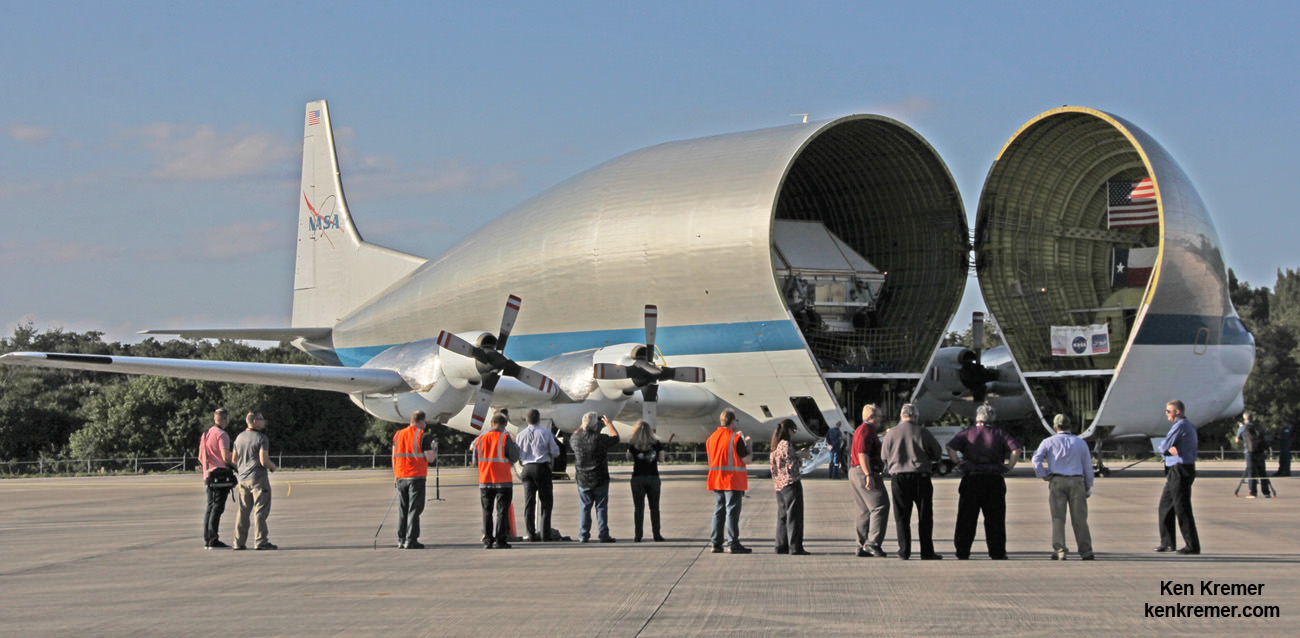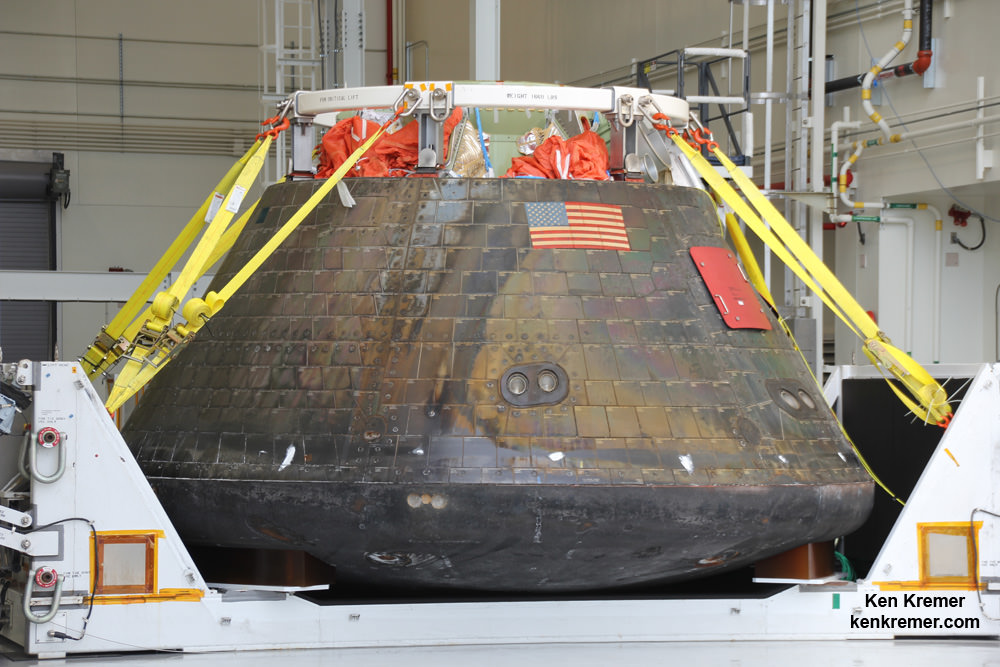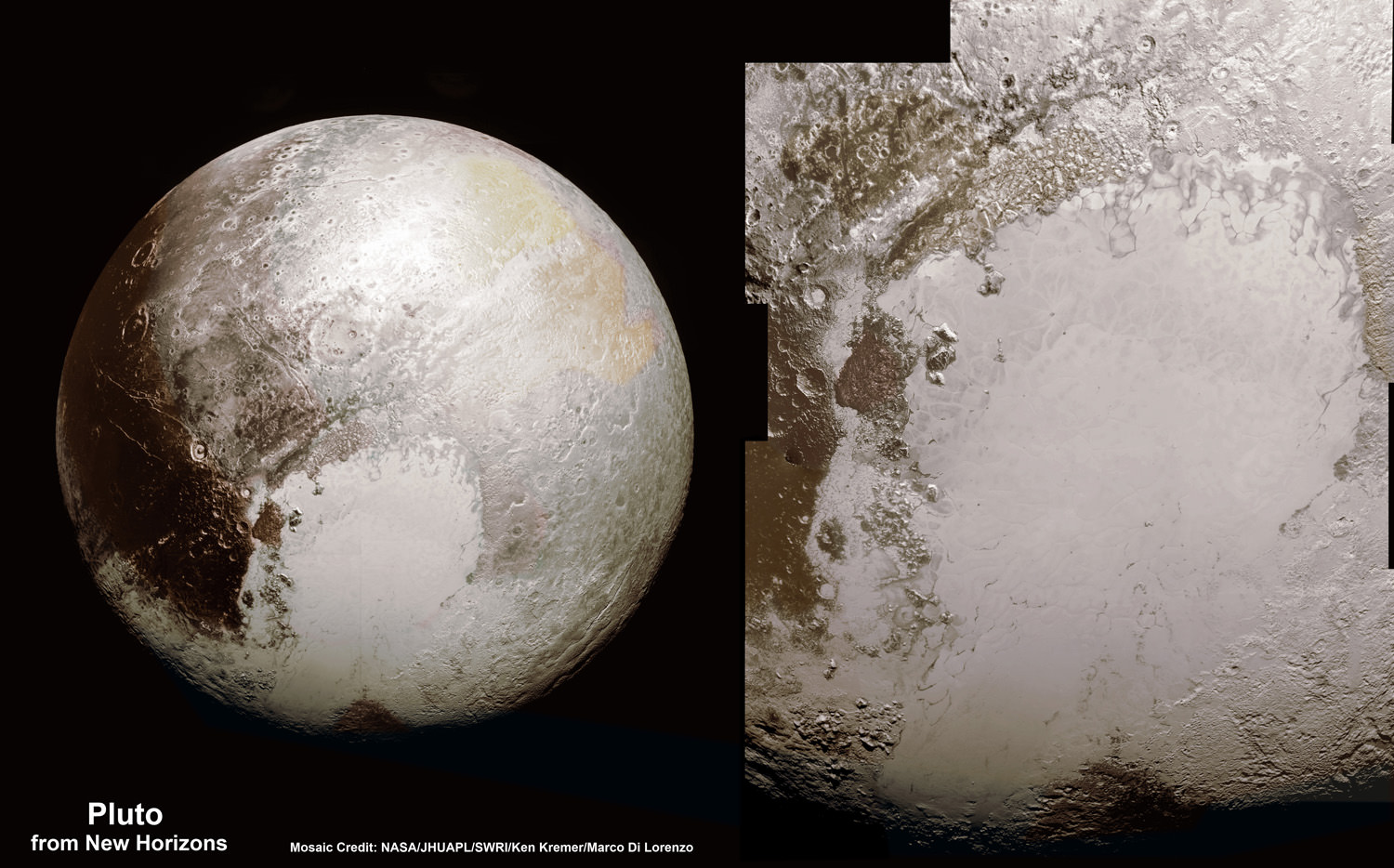
The Obama Administration has announced its new Federal budget and is proposing to cut NASA’s Fiscal Year 2017 Budget to $19 billion by carving away significant funding for deep space exploration, whereas the overall US Federal budget actually increases to over $4.1 trillion.
This 2017 budget request amounts to almost $300 million less than the recently enacted NASA budget for 2016 and specifically stipulates deep funding cuts for deep space exploration programs involving both humans and robots, during President Obama’s final year in office.
The 2017 budget proposal would slash funding to the very programs designed to expand the frontiers of human knowledge and aimed at propelling humans outward to the Red Planet and robots to a Jovian moon that might be conducive to the formation of life.
Absent sufficient and reliable funding to keep NASA’s exploration endeavors on track, further launch delays are almost certainly inevitable – thereby fraying American leadership in space and science.
The administration is specifying big funding cuts to the ongoing development of NASA’s mammoth Space Launch System (SLS) heavy lift rocket and the state of the art Orion deep space crew capsule. They are the essential first ingredients to carry out NASA’s ambitious plans to send astronauts on deep space ‘Journey to Mars’ expeditions during the 2030s.
The overall Exploration Systems Development account for human deep space missions would be slashed about 18 percent from the 2016 funding level; from $4.0 Billion to only $3.3 Billion, or nearly $700 million.
SLS alone is reduced the most by $700 million from $2.0 billion to $1,31 billion, or a whopping 35 percent loss. Orion is reduced from $1.27 billion to $1.12 billion for a loss of some $150 million.
Make no mistake. These programs are already starved for funding and the Obama administration tried to force similar cuts to these programs in 2016, until Congress intervened.
Likewise, the Obama administration is proposing a draconian cut to the proposed robotic mission to Jupiter’s moon Europa that would surely delay the launch by at least another half a decade or more – to the late 2020s.
The Europa mission budget proposal is cut to only $49 million and the launch is postponed until the late 2020s. The mission received $175 million in funding in 2016 – amounting to a 72 percent reduction.
Furthermore there is no funding for a proposed lander and the launch vehicle changes from SLS to a far less powerful EELV – causing a year’s long increased travel time.
In order to maintain an SLS launch in approximately 2022, NASA would require a budget of about $150 million in 2017, said David Radzanowski, NASA’s chief financial officer, during a Feb. 9 teleconference with reporters.
Why is Europa worth exploring? Because Europa likely possesses a subsurface ocean of water and is a prime target in the search for life!
Overall, NASA’s hugely successful Planetary Sciences division suffers a huge and nearly 10 percent cut of $141 million to $1.51 billion – despite undeniably groundbreaking scientific successes this past year at Pluto, Ceres, Mars and more!
Altogether NASA would receive $19.025 billion in FY 2017. This totals $260 million less than the $19.285 billion appropriated in FY 2016, and thus corresponds to a reduction of 1.5 percent.
By contrast, the overall US Federal Budget will increase nearly 5 percent to approximately $4.1 trillion. Simple math demonstrates that NASA is clearly not a high priority for the administration. NASA’s share of the Federal budget comes in at less than half a cent on the dollar.

NASA’s Fiscal Year 2017 budget proposal was announced by NASA Administrator Charles Bolden during a televised ‘State of NASA’ address at the agency’s Langley Research Center in Virginia on Feb. 9.
Bolden did not dwell at all on the significant funding reductions for exploration.
“We are hitting our benchmarks with new exploration systems like the Space Launch System rocket and the Orion Crew Vehicle. A new consensus is emerging in the scientific and policy communities around our vision, timetable and plan for sending American astronauts to Mars in the 2030s.”
And he outlined some milestones ahead.
“We’ll continue to make great progress on the Space Launch System – SLS–rocket and we’re preparing for a second series of engine tests,” said Bolden.
“At the Kennedy Space Center, our teams will outfit Orion’s crew module with the spacecraft’s heat-shielding thermal protection systems, avionics and subsystems like electrical power storage, cabin pressure control and flight software –to name just a few.”

NASA plans to launch the first combined SLS/Orion on the uncrewed Exploration Mission-1 (EM-1) in November 2018.
Indeed the Orion EM-1 pressure vessel just arrived at the Kennedy Space Center last week to completely install all the systems required for flight.

The launch date for the first crewed flight on EM-2 was targeted for 2021. But EM-2 is likely to slip to the right to 2023, due to insufficient funding.
Lack of funding will also force NASA to delay development of the far more capable and powerful Exploration Upper Stage (EUS) to propel Orion on deep space missions. It will now not be available for the SLS/EM-2 launch as hoped.
The proposed huge budget cuts to SLS, Orion and Europa are certain to arose the ire of multiple members of Congress and space interest groups, who just successfully fought to increase NASA’s FY 2016 budget for these same programs in the recently passed 2016 omnibus spending bill.
“This administration cannot continue to tout plans to send astronauts to Mars while strangling the programs that will take us there,” said Rep. Lamar Smith (R-Texas), Chairman of the House Science, Space, and Technology Committee, in a statement in response to the president’s budget proposal.
“President Obama’s FY17 budget proposal shrinks our deep space exploration programs by more than $800 million. And the administration once more proposes cuts of more than $100 million to the Planetary Science accounts, which have previously funded missions like this past year’s Pluto flyby.”
“This imbalanced proposal continues to tie our astronauts’ feet to the ground and makes a Mars mission all but impossible. This is not the proposal of an administration that is serious about maintaining America’s leadership in space.”

“The Coalition for Deep Space Exploration … had hoped the request would reflect the priorities laid out for NASA in the FY16 Omnibus, for which there was broad support,” said Mary Lynne Dittmar, executive director of the Coalition for Deep Space Exploration, in a statement.
“Unfortunately this was not the case. The Coalition is disappointed with the proposed reduction in funding below the FY16 Omnibus for NASA’s exploration programs. We are deeply concerned about the Administration’s proposed cut to NASA’s human exploration development programs.”
“This proposed budget falls well short of the investment needed to support NASA’s exploration missions, and would have detrimental impacts on cornerstone, game-changing programs such as the super-heavy lift rocket, the Space Launch System (SLS), and the Orion spacecraft – the first spacecraft designed to reach multiple destinations in the human exploration of deep space.”

Funding for the James Webb Space Telescope (JWST) was maintained at planned levels to keep it on track for launch in 2018.

On Dec. 18, 2015, the US Congress passed and the president signed the 2016 omnibus spending bill which funds the US government through the remainder of the 2016 Fiscal Year.
As part of the omnibus bill, NASA’s approved budget amounted to nearly $19.3 Billion. That was an outstanding result and a remarkable turnaround to some long awaited good news from the decidedly negative outlook earlier in 2015.
The 2016 budget represented an increase of some $750 million above the Obama Administration’s proposed NASA budget allocation of $18.5 Billion for Fiscal Year 2016, and an increase of more than $1.2 Billion over the enacted budget for FY 2015.
Under the proposed NASA budget for Fiscal Year 2017, the fictional exploits of ‘The Martian’ will never become reality.
And the hunt for extraterrestrial life on the icy moons of the outer solar system is postponed yet again.

Stay tuned here for Ken’s continuing Earth and Planetary science and human spaceflight news.


Knew this was coming. As it is costing more money every year above inflation just to run the Government, that means something has to give. And the US Government thinks NASA is a luxury item that they can pay or not pay for anytime they want. Think about what this is going to do for schedules going forward.
My biggest thing is why the heck is NASA not running for profit yet? That should be a goal with NASA. Think about advertising potential Think about mining rights NASA could be renting. Think about office space in a moon colony. And more…
100% NASA’s future missions should be based on profit potential with scientific research being fitted in when money is there.
As to why NASA is not running a profit, from day one, it has been required, by law, to make its technological advancements available to U.S. industry at no cost. It is supposed to stimulate American business and technology, not run a profit for itself. Frankly, that’s probably the best approach, although it falsely makes NASA appear to “cost” the American taxpayer billions of dollars per year, when the reality is just the opposite.
The foolish *** doesn’t want to reach Mars. Next time try not to vote demagoguery.
You mean like in not voting for someone who wants to build a bridge to Mars and let the damned martians pay for it?
Who actually proposed THAT?
Could someone help an ignorant European by explaining what are the parts of the US Federal Budget which are eating the biggest budgets and increases, in spite of being far less critical than Deep Space exploration, please?
It’s not ignorant to ask a question when one requires information.
Medicare, Medicaid, and Obamacare eat up the budget the most, and increase the most year after year.
Soon, interest on the $20 trillion debt ($10.5 trillion of which was created by the current administration) will be the third biggest budget expenditure.
https://en.wikipedia.org/wiki/2015_United_States_federal_budget#Outlays_by_budget_function
Obama does not care about the leaps in human knowledge and technology that has come from the space program; knowledge and technology that would continue to advance if not for his cuts. He would rather give our money away to lazy people as opposed to fund worthwhile projects like NASA, veterans benefits and social security. You know, all the programs where people actually work and earn their benefits.
The funny thing is, you NEVER hear about cuts to welfare, food stamps, free cell phones or medicaid. These programs were designed to help the injured few who really need them, not support low life takers who pump out kids just to collect welfare checks and free services. None of these programs are earned; they simply deplete hard earned tax dollars for the sake of laziness, fraud, and ever increasing government control
Obama does not care about the leaps in human knowledge and technology that has come from the space program; knowledge and technology that would continue to advance if not for his cuts. He would rather give our money away to lazy people as opposed to fund worthwhile projects like NASA, veterans benefits and social security. You know, all the programs where people actually work and earn their benefits.
The funny thing is, you NEVER hear about cuts to welfare, food stamps, free cell phones or medicaid. These programs were designed to help the injured few who really need them, not support low life takers who pump out kids just to collect welfare checks and free services. None of these programs are earned; they simply deplete hard earned tax dollars for the sake of laziness, fraud, and ever increasing government control.
I would speak my mind about the US government and how it allocated over $600 Billion dollars a year on war and still finds a reason to cut spending on a program that will get humans to other planets.
Unfortunately, people under the age of 42 might be reading this, and the words I have in mind might scar such people.
So:
The united states government is such an #$$%$# #%$@ $@^#$! $#@%@$$ #%@# $*&@#% that #*%## and they shouldn’t even #%&@ exist under #*%@ #@* #B% @&* @% &* @#% *@. GO TO #$Q@!@ @#!# @# %!@^@$#% @ @#% 2t4$ #%@Y^2425 (*^$#&$%* $&^$^$*% %^$*.
Okay.
NASA, you should consider Asteroid Mining. Not to turn a profit, per say, but to make enough money that you can actually stop relying on this #*(%@$&#( &@$#%( *@@&%&(@&%*( *(@#*($%(* @(*%& (*#$ government.